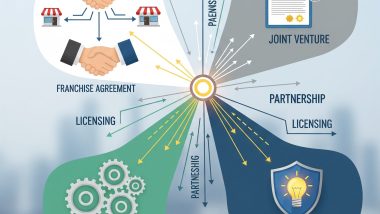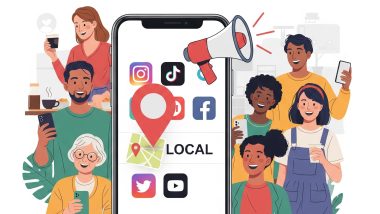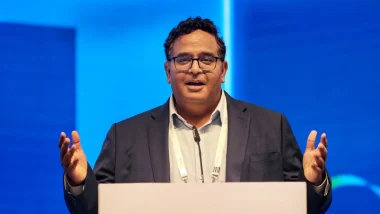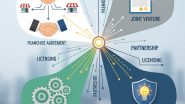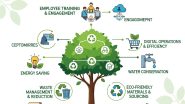??Introduction
- Do your business work on the Fly Light Model?
- Are you planning to scale up your business across the globe?
Gone are the days when a business needed very huge capital investment to become a conglomerate. The technology has defied all myths and misconception regarding business.
Today, all global tech or non-tech giants are running their business on the fly light model without investing too much on capital.
What is Fly Light Model?
If you put 2 kg weight on a kite, it will not fly high, instead, the more you make it light the higher it will fly.
| A business has to be built on a fly light model to make it fly high. |
WhatsApp:
It is a fly light business model that WhatsApp has become the world’s largest internet-based messaging service, without having a single server of its own. It uses people’s mobile as their server. With only 200 employees, they expanded their business all over the world and increased profit drastically, without investing too much.
Uber:
Uber became the world’s largest taxi service, without having a single taxi on their own name. This is also an example of a fly light business model.
Uber did not spend a huge amount of capital on purchase on assets. What they did do, was connecting customers with the customer (C2C) through an online platform.
Alibaba:
By adopting the fly light business model, Alibaba does become the world’s most valuable retailer, without having even a single inventory on its own name.
In this kind of business model, owners don’t have to make a heavy investment in the capital; instead, they have to invest in operational expenditure on frequent intervals, which automatically increases profitability. |
It automatically increases the return on investment of promoter and investor, since capital expend is extremely low.
Benefits of Fly Light Model
1. High return on Asset
The fly light model gives you a high return on assets as you don’t need to spend huge capital for expanding your business.
At the same cost of capital, you can scale up your business across every corner of the world, which automatically increases your return.
2. Controlled Profit Fluctuation
In the world of ever-evolving technology, keeping profitability constantly increasing is as difficult as never before. In just the last few decades, technology left much business out of business.
| For Example: Postman was replaced by telegram, telegram by courier, a courier by Email, Email by social media and now Social media is being replaced by WhatsApp. |
3. Scalability Driven Cost
In the traditional business model, every business needs a heavy cost for its expansion. But in this business model, your cost doesn’t increase, no matter how much you scale it up. But despite the low cost, your profitability will go on increasing.
Examples of Fly Light Model
1. FranchiseThe franchise is the fastest and easiest model to do business for Franchisor and Franchisee. It works on the fly light business model as it reduces their burden on capital expenditure by distributing it between Franchisor and Franchisee.
- Here, a big Franchisor doesn’t need to invest more capital to set up a new unit, whereas a small Franchisee doesn’t need to invest heavily on sales, marketing, proprietary tools, training/learning, and development operational expertise of intelligence.
- A Franchisee gets trademark, system, signage, software for the fee to get started.
- A Franchisor gives training to manpower, corporate strategies, sales, marketing, branding support to Franchisee and in return, they get a licensing fee, monthly royalty as a profit. Few models of Franchising are:
| For Example: Notably, India’s biggest iron rod producer Kamdhenu Group has come on this model. With a chain of 10,000 dealers and distributors, it has given 70 franchisees across the country for producing iron rod. In return, they give them technology, marketing support, distribution, and dealer support. |
It is based on fly light model where you reduce your cost of capital and build operational efficiency by shifting your task to an external party.
| For Example: Apple is the world’s most premium mobile brand though it doesn’t make mobile on their own. Apple has outsourced its manufacturing part to Foxconn in China and focused its all resources on designing, R&D, marketing and sales. Hence it has reduced their high cost on manufacturing and increased scalability. |
3. Asset Sharing Model
Asset sharing model is also one of the types of fly light model.
In the asset sharing model, two or more companies come together to share the cost of a high valued asset to reduce their expenses. Many big infrastructures like oil and gas companies work on this model where the purchase of an expensive asset is needed.
It is called the optimization of capital cost, risk diversity, and division of Capital cost.
| For Example: OYO began their business on asset sharing model by sharing the property with property owners without investing heavily on buying a property. It reduced their cost and increased profitability significantly. |
4. Pay-Per-Use: Co-sharing/Co-working Space
In the traditional business model, if your company wants to open small offices in 5 different cities of the country, then you will have to invest heavily in establishing each office.
But Pay-Per-Use, a booming form of fly light business model, has made it very easy to set up your office without spending too much. This is the concept of co-sharing/co-working office spaces on pay-per-use, where you pay rent as per usage.
In this model, you have to share common pantry, internet, printer, meeting room, washroom, and stationery.
5. Licensing-In & Licensing-Out
It is also one of the forms of fly light model.
Many pharmaceutical companies, in order to save their cost of R&D and brand development, license-in and license-out their products to other manufacturers.
License-in:
In this, a big company gets a license to sell products of another company. Here a company focuses on manufacturing, sales & marketing.
Licensing-out:
In this, a company gives license to other companies to manufacture its products. Here a company focuses on R&D and brand development.

